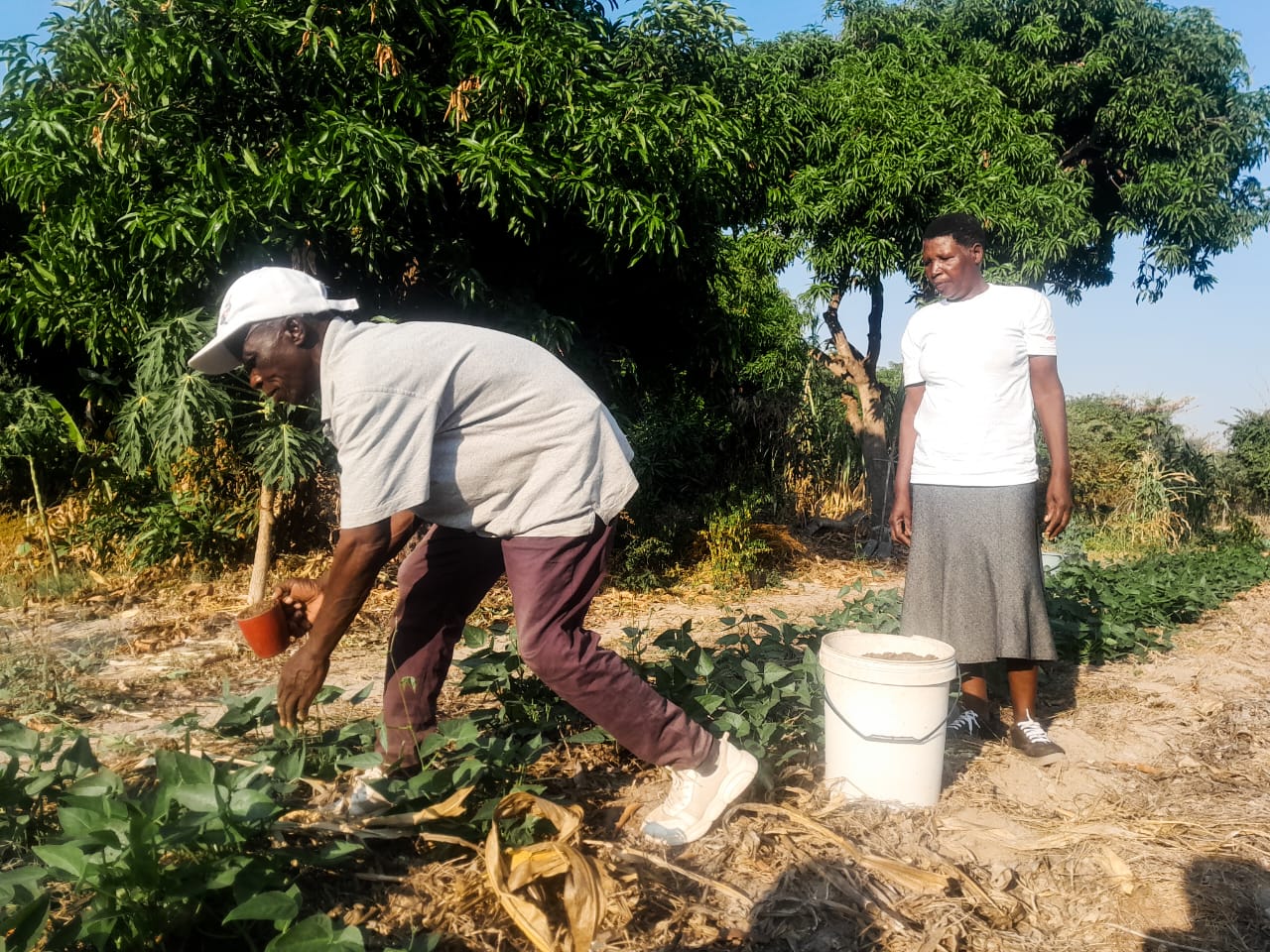|
Getting your Trinity Audio player ready…
|
Writes Lloyd Rabaya
As the sun rises over the field, casting a golden glow over the crops. Abel Katsande (67) and Marova Moyo (62) smile as they welcome visitors to their 1.5-acre field in Kawere village, Mutoko, about 170km from Harare. One easily notices the remnants of the recently harvested maize crop with leftover maize stalks on the piece of land.
“We use these remains as livestock feed or to mulch our crops,” Moyo told this publication during a farmers’ engagement tour organized by the Zimbabwe Smallholder Organic Farmers’ Forum (ZIMSOFF) last week.
The couple inherited this land from Katsande’s parents, who started farming here in 1961. Over the years, the soil started losing its fertility, and in 2010, they adopted agroecology, which helped improve fertility and boosted their yield substantially. They now grow various crops all year round, using permanent holes, organic manure, natural herbs to keep aphids and other insects away, and ash to control soil acidity.
“When we want to grow anything, we reopen the same holes, add a cup of manure, mix it with soil, and throw our seed,” Katsande said, his voice filled with nostalgia.
The United Nations (UN) Food and Agriculture Organization (FAO), defines agroecology as a ”holistic approach that integrates ecological and social concepts and principles to design and manage sustainable agriculture and food systems. It optimizes the interactions between plants, animals, humans, and the environment while also addressing the need for socially equitable food systems within which people can exercise choice over what they eat and how and where it is produced.”
With their small piece of land, agroecology has helped the family obtain maximum yield on a shoestring budget.
“You only use what you have – traditional grains (mbeu dzemavambo) like sorghum (mashava), and finger millet, as well as traditional maize,” said Moyo, as her eyes sparkled with pride.
Agroecology is also in tandem with the UN’s Sustainable Development Goals (SDGs) 2, 13, and 15 which focus on zero hunger, food security, nutrition and health, climate change resilience, and biodiversity.
“In this field, we have trees that act as windbreaks, at the same time giving us fruits and shade. When the leaves fall, we can use them as manure or mulch,” Moyo said.
The family avoids ploughing as soil fertility is reduced each time the plough cuts, and by reusing holes for the last 14 years, nutrients are consolidated. One hole equals two cups of harvest.
In 2020, the Zimbabwean government introduced the Pfumvudza/Intwasa program which was aimed at training 1.8 million smallholder farmers in conservation farming. In the program, farmers were to desist from ploughing the land and start holing, using mulch to conserve moisture, and “improving” seed varieties and fertilizer.
“The difference with us is that we use organic fertilizers and seed which we keep by ourselves. Everything that we use is organic, and promotes a healthy diet that does not have any side effects,” said Katsande.
To mitigate the severe effects of El Nino, Katsande and Moyo implemented water harvesting, which FAO defines as,” key water-related interventions with the potential to contribute to rapid improvements in the yields of rain-fed crops.”
Due to the infrequent rainfall patterns, the Southern African region is experiencing, Moyo said water harvesting is a key asset to farming as every drop is utilised to the last particle.
“Having our well in the field sustains us when there is low rainfall. The water inside can take us for the next three months,” she said.
They made trenches just below a dwala in their yard, directing the water into pits dug just outside the field. The water reaches the crops and the well through run-off, a process where water is absorbed into the ground. When they harvest, Moyo goes with it to Mbare in Harare or crosses to Mozambique as farming is their source of income.
The family is a beacon of hope in the community with more people consulting them on how to implement sustainable agriculture.
A few kilometres from the Katsande homestead is Kahukwa Kanyonganise’s homestead, nestled beneath a mountain. The 73-year-old invented an intricate method of water harvesting taking advantage of the mountain above his house.
Kanyonganise conveys rain from the mountain to a tank on his homestead. The golden ager dug a huge pit in the mountain from which water descends through ridge-like pavements he made on a dwala from brick and cement.
“From here, the water gets into another pit below and gets into the pipes, then into the tank. I started this method in 2012 because, here in farming region 4, we receive small amounts of rain,” he said.
Kanyonganise is water-sufficient for three months in dry spells after the rain and, like the Katsande family, he practices crop rotation and intercropping, where crops like beans, okra, and cowpeas act as live mulch that the farmer will harvest again.
ZIMSOFF Programme Officer, Patience Shumba, highlighted that besides ensuring food security, agroecology sustains the ecosystem and preserves it for future generations.
“Agroecology enhances several dimensions of food security – stability, availability, access, and utilization. It also promotes diversity as it contributes to reducing poverty to our rural small-scale farmers, improving farmers’ livelihoods, and enhancing resilience,” she said in a comment.
Last month, the Minister of Agriculture, Dr. Anxious Masuka, announced to Cabinet that the country required food aid of about US$3 billion due to low harvest, thanks to El Nino. President Emmerson Mnangagwa, in April, declared the drought a state of national disaster, and so did neighbouring Zambia and Malawi.
The UN pledged to seek US$430 million in support of an estimated nine million people. The World Food Programme (WFP) also sought US$61 million to provide food assistance to vulnerable groups.
